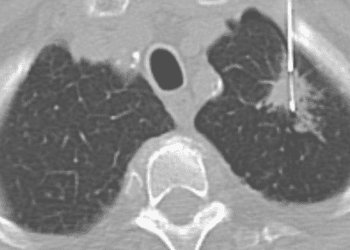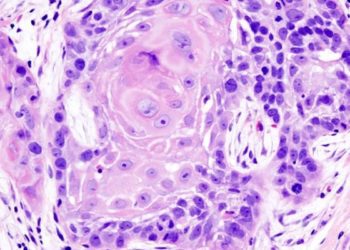Medication-related osteonecrosis of the jaw is prevalent in patients with breast cancer
1. The cumulative incidence of medication-related osteonecrosis of the jaw (MRONJ) in patients with breast cancer bone metastases was much higher compared to the available data reported in the literature thus far.
Evidence Rating Level: 2 (Good)
MRONJ is a common side effect of antiresorptive therapeutics such as bisphosphonates and denosumab which are used in the setting of metastatic breast cancer to manage bone metastases. While data has been reported on the risk of developing MRONJ, reports are highly variable and range between 1% and 17%. This multicentre retrospective study therefore sought to provide a precise investigation of the population-based incidence of MRONJ in breast cancer patients with bone metastases. 639 participants (median age = 61.8 years) from several centres in the Austrian state of Tyrol were included in this study. Individuals must have been diagnosed with breast cancer and bone metastases and received antiresorptive therapy to have been included. The cumulative incidence of MRONJ overall was 8.8% (95% CI, 6.6 to 11.0). It was found to be 11.6% (95% CI, 8.0 to 15.3) for patients receiving denosumab only, 2.8% (95% CI, 0.7 to 4.7) with bisphosphonates only and 16.3% (95% CI, 8.8 to 23.9) in patients who received bisphosphonates followed by denosumab. A significant difference in overall survival (OS) was observed between patients receiving different management options (log-rank test; P < .001), with the median OS being 7.9 years for patients receiving denosumab only, 5.6 years for patients receiving bisphosphonates only and 10.7 years for patients receiving bisphosphonates and then denosumab sequentially. However, as the use of denosumab became the standard of care during a period where significant changes were made to the management strategies of breast cancer, these results should be taken with caution. Overall, this study showed that the cumulative incidence of MRONJ was considerably higher than the data currently reported in the literature.
Click to read the study in Journal of Clinical Oncology
Image: PD
©2024 2 Minute Medicine, Inc. All rights reserved. No works may be reproduced without expressed written consent from 2 Minute Medicine, Inc. Inquire about licensing here. No article should be construed as medical advice and is not intended as such by the authors or by 2 Minute Medicine, Inc.







